
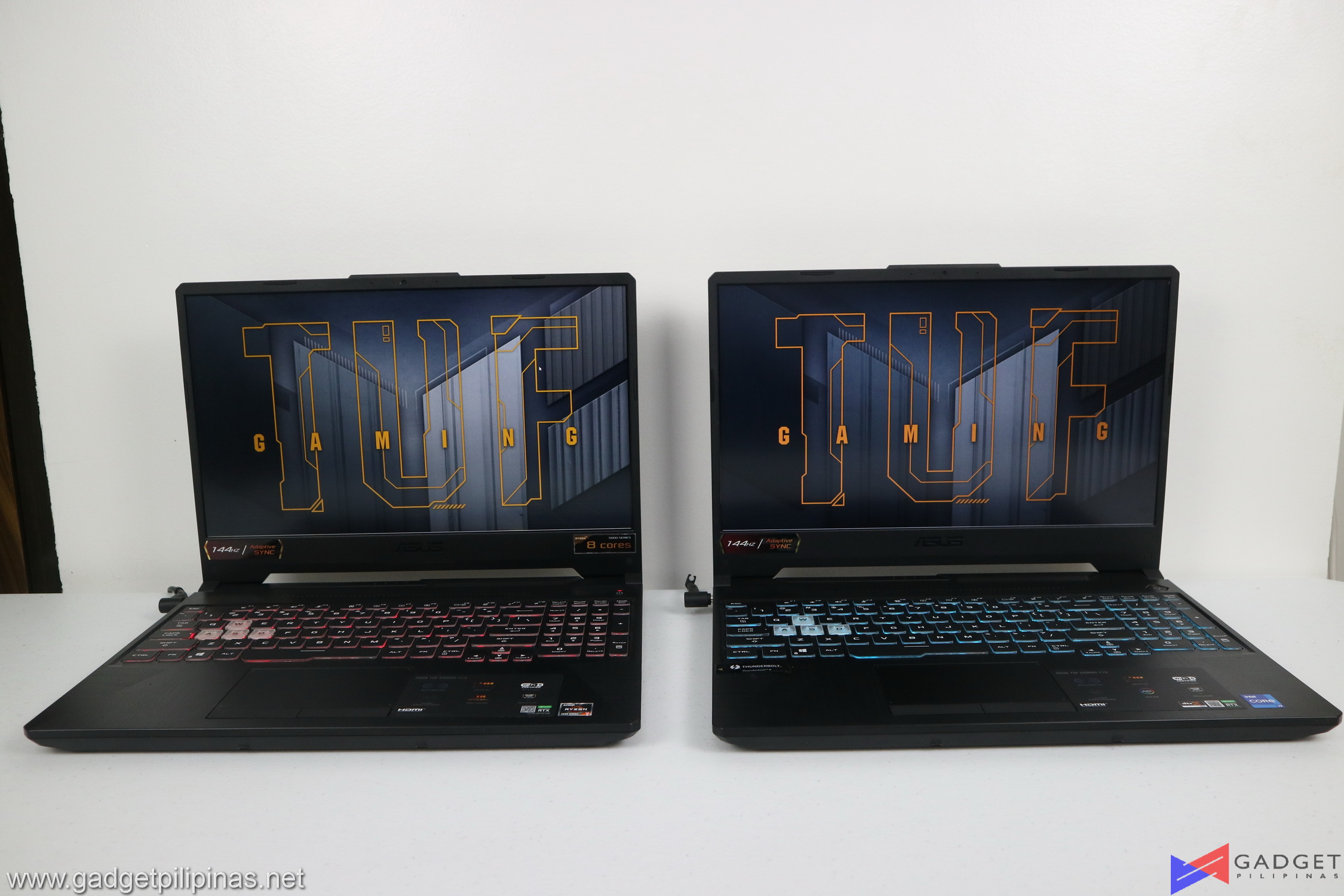 Competition in the CPU space has never been this interesting in a long time as we continue to see products from both brands compete in different price points, segments, and use-cases. We’ve already reviewed Intel’s latest Desktop processors namely the Intel Core i9 11900K and Intel Core i5 11600K as well as look at some of the latest Tiger-Lake processors in the form of the i9-11900H. But what’s different this time is that we get to focus on the Intel Core i7 11800H Tiger-Lake processor itself rather than as part of a whole device. Enter the ASUS TUF F15 and TUF A15 Gaming Laptops which feature an identical internal configuration with the exception of their respective processors.
Competition in the CPU space has never been this interesting in a long time as we continue to see products from both brands compete in different price points, segments, and use-cases. We’ve already reviewed Intel’s latest Desktop processors namely the Intel Core i9 11900K and Intel Core i5 11600K as well as look at some of the latest Tiger-Lake processors in the form of the i9-11900H. But what’s different this time is that we get to focus on the Intel Core i7 11800H Tiger-Lake processor itself rather than as part of a whole device. Enter the ASUS TUF F15 and TUF A15 Gaming Laptops which feature an identical internal configuration with the exception of their respective processors.
A Dive Into The Tiger Lake-H Series
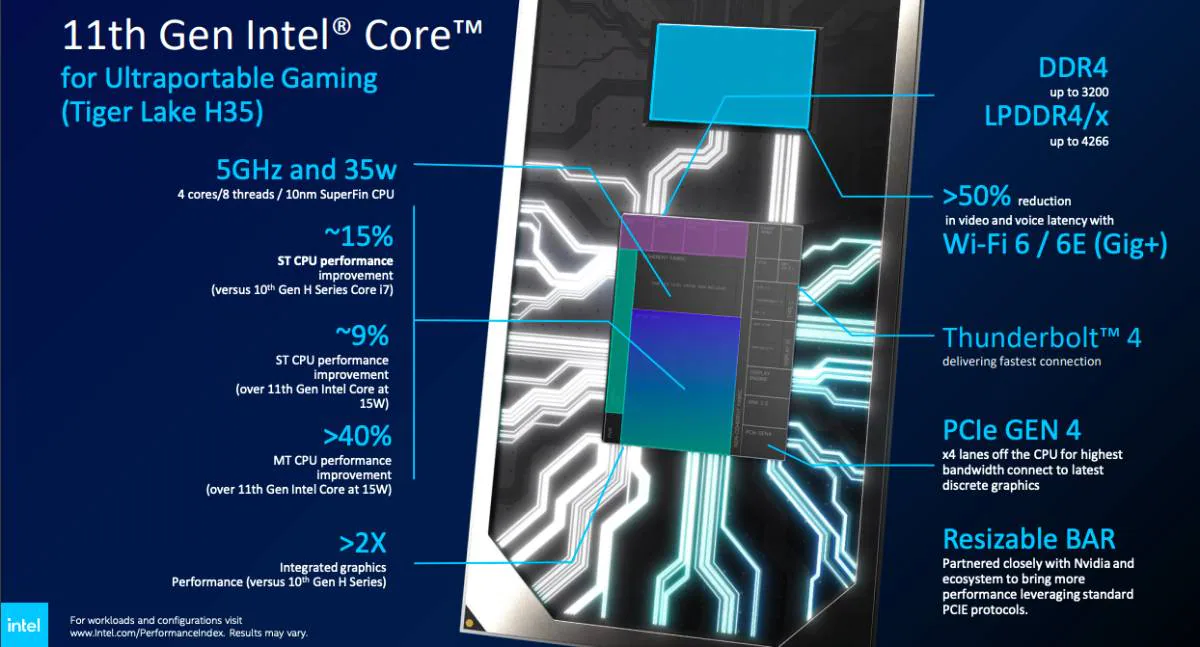 Intel’s latest Tiger Lake-H series processors use a new microarchitecture which Intel has finally graduated from using revamped Skylake-based architectures. The latest Tiger Lake-H series brings substantial improvements not only in the performance side of things but also brings in much-awaited upgrades in I/O with PCI-E Gen 4 & Thunderbolt 4 Support, Integrated Graphics with the latest Xe graphics as well as power efficiency brought upon by Intel’s 10nm SuperFin process.
Intel’s latest Tiger Lake-H series processors use a new microarchitecture which Intel has finally graduated from using revamped Skylake-based architectures. The latest Tiger Lake-H series brings substantial improvements not only in the performance side of things but also brings in much-awaited upgrades in I/O with PCI-E Gen 4 & Thunderbolt 4 Support, Integrated Graphics with the latest Xe graphics as well as power efficiency brought upon by Intel’s 10nm SuperFin process.
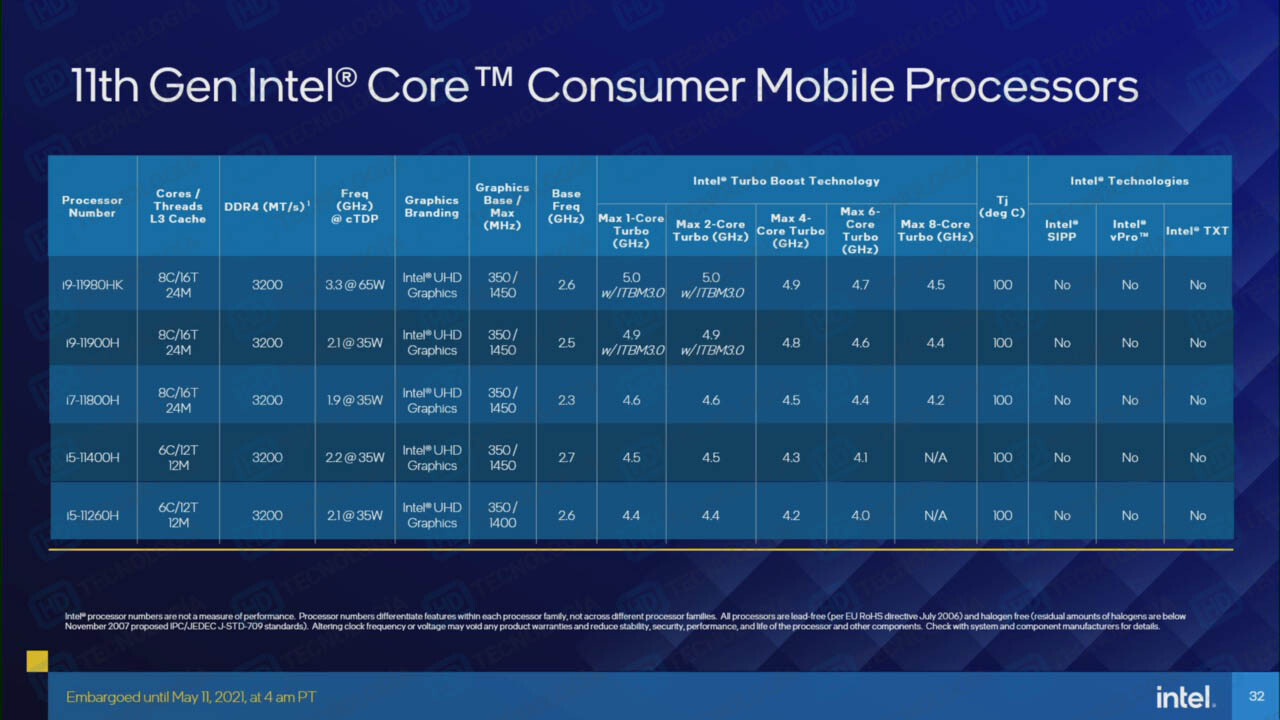 The latest Intel Tiger Lake-H mobile processors range from the 6-core/12-thread Intel Core i5 11260H all the way to the overclockable 8-core/16-thread Intel Core i9 11980HK. Intel brings IBTM 3.0 to its Core i9 processors which is basically the mobile version of Intel’s Turbo Velocity Boost which we recently saw on the desktop Intel Core i9 11900K. While we’d like to take a look at the mobile flagship 11900HK we’ll be focusing on the Intel Core i7 11800H which is likely what most people will likely get their hands on.
The latest Intel Tiger Lake-H mobile processors range from the 6-core/12-thread Intel Core i5 11260H all the way to the overclockable 8-core/16-thread Intel Core i9 11980HK. Intel brings IBTM 3.0 to its Core i9 processors which is basically the mobile version of Intel’s Turbo Velocity Boost which we recently saw on the desktop Intel Core i9 11900K. While we’d like to take a look at the mobile flagship 11900HK we’ll be focusing on the Intel Core i7 11800H which is likely what most people will likely get their hands on.
Intel Core i7 11800H inside the ASUS TUF F15
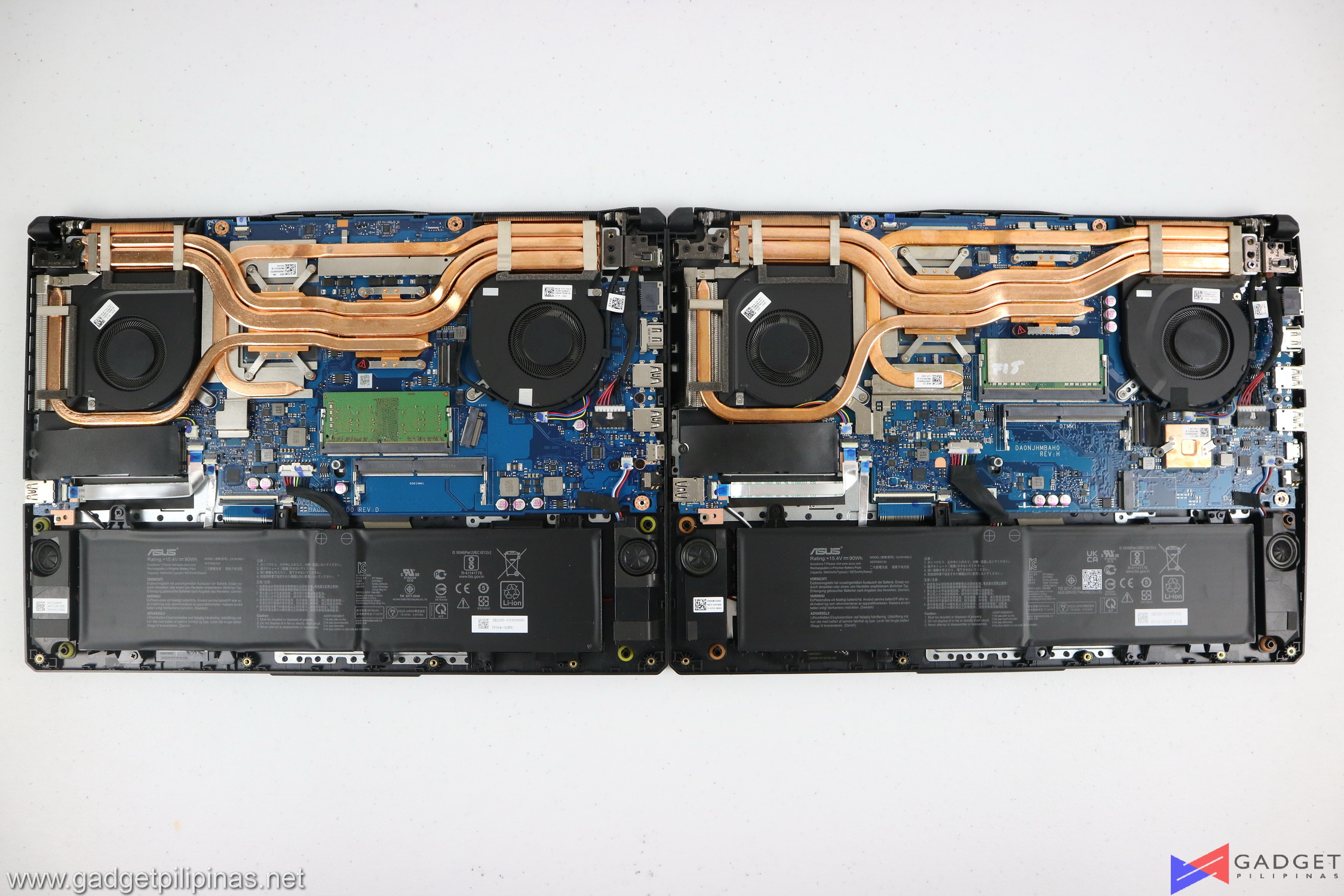 OEMs or essentially brand partners may set the CPU’s clock speed configuration relative to its 35W-45W TDP with the ASUS TUF F15 FX506HM using the 45W TDP configuration for the Intel Core i5 11800H. The Intel Core i7 11800H is an 8core/16-thread CPU that runs at a base clock of 2.30 Ghz with a max boost clock of 4.6Ghz. It’s AMD 8-core counterpart is the AMD Ryzen 7 5800H and is housed inside the ASUS TUF A15 which is priced and configured the same as the FX506HM. Both laptops run have 8GB RAM running at 3200Mhz and an RTX 3060 configured at 90W with a 5W with Dynamic Boost.
OEMs or essentially brand partners may set the CPU’s clock speed configuration relative to its 35W-45W TDP with the ASUS TUF F15 FX506HM using the 45W TDP configuration for the Intel Core i5 11800H. The Intel Core i7 11800H is an 8core/16-thread CPU that runs at a base clock of 2.30 Ghz with a max boost clock of 4.6Ghz. It’s AMD 8-core counterpart is the AMD Ryzen 7 5800H and is housed inside the ASUS TUF A15 which is priced and configured the same as the FX506HM. Both laptops run have 8GB RAM running at 3200Mhz and an RTX 3060 configured at 90W with a 5W with Dynamic Boost.
BENCHMARK SETUP AND METHODOLOGY
Gadget Pilipinas’ testing philosophy is to provide detail-oriented results as accurately as possible that our readers can replicate our tests given that these conditions are met. Different benchmarking apps and sequences are used depending on the component or device being tested.
We use CapFrameX 1.6.4 as our FPS capture and analysis tool for all our gaming benchmarks. The latest build version of Windows 10 and WHQL certified drivers are used for our benchmarks. Readings such as temperatures and power draw are recorded using HWMonitor, HWInfo64, and other relevant software for cross-checking.
| SPECS | ASUS TUF Gaming F16 FX506HM | ASUS TUF Gaming A15 FX506QM |
| CPU | Intel Core i7 11800H | AMD Ryzen 7 5800H |
| RAM | Samsung 8GB DDR4 3200MHz | Micron 8GB DDR4-3200MHz |
| GPU | Nvidia RTX 3060 95W | Nvidia RTX 3060 95W |
| SSD | SK Hynix 1TB M.2 NVMe SSD(PCIE Gen3) | SK Hynix 1TB M.2 NVMe SSD(PCIE Gen 3) |
| Display | 15.6″ 1080p 144Hz Display | 15.6″ 1080p 144Hz Display |
For this 1:1 comparo, both laptops are using the same version of windows as well as the latest Nvidia Graphics Driver version 471.68 for a more controlled testing environment. Both laptops have their respective firmware and BIOS updated to the latest version. There were no other apps installed aside from the necessary benchmarking software, games, and monitoring software. Both laptops were set to TURBO under the ASUS Armoury Crate software to eliminate any clock speed behavior discrepancy for both CPUs and GPUs involved.
Our benchmark list and methodology may change in the future, depending on the industry trend.
Synthetic Benchmarks
- SuperPI 32M Single-Threaded Benchmark
- wPrime 1024M Multi-Threaded Benchmark
- Geekbench 5.4.4 Benchmark
- Cinebench R20 & Cinebench R23 Benchmark
- Google Octane 2.0 Benchmark
- Corona 1.3 Renderer Benchmark
- V-RAY Benchmark
- Blender 2.93 Benchmark
- HWBOT x265 Benchmark
- PCMark 10 Modern Office
- PCMark 10 Extended
- 3DMark Firestrike, TimeSpy
Gaming Benchmarks
- DOTA 2
- Far Cry 5
- Rainbow Six Siege
- F1 2020
- Horizon Zero Dawn
- Metro Exodus
- Cyberpunk 2077
- Shadow of the Tomb Raider
- Assassins Creed Odyssey
11800H vs 5800H Synthetic Benchmarks
SuperPI 32M
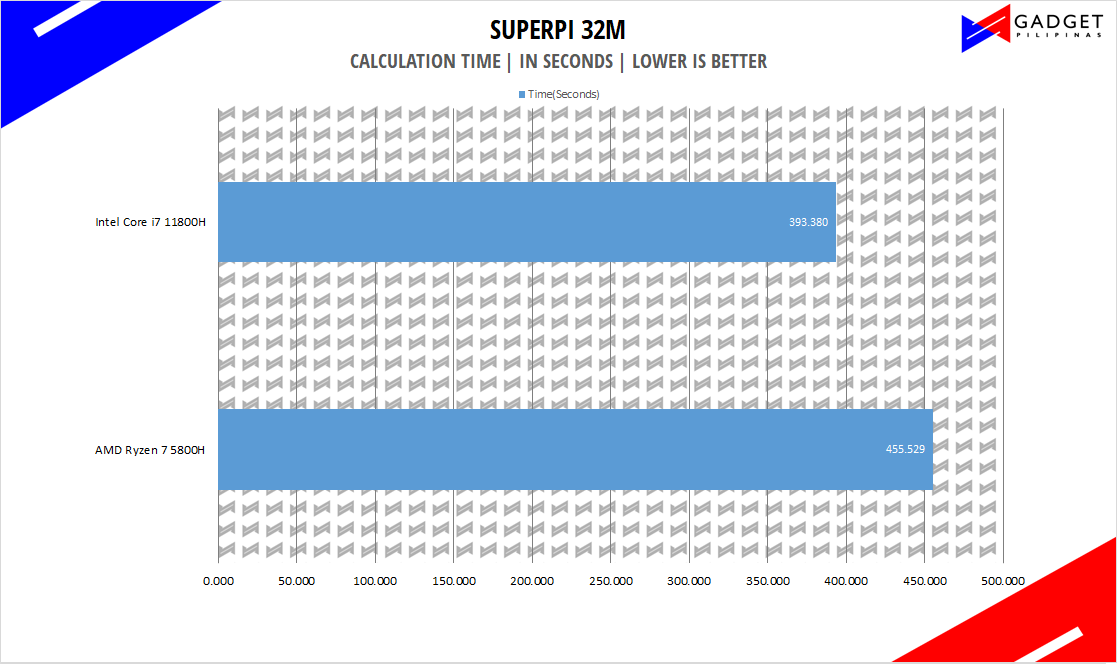 SuperPI is a single-threaded benchmark application that lets the CPU calculate Pi(π) to the nth digit. In this benchmark, we selected the Pi calculation to 32M, the highest available for the app.
SuperPI is a single-threaded benchmark application that lets the CPU calculate Pi(π) to the nth digit. In this benchmark, we selected the Pi calculation to 32M, the highest available for the app.
wPrime 1024M
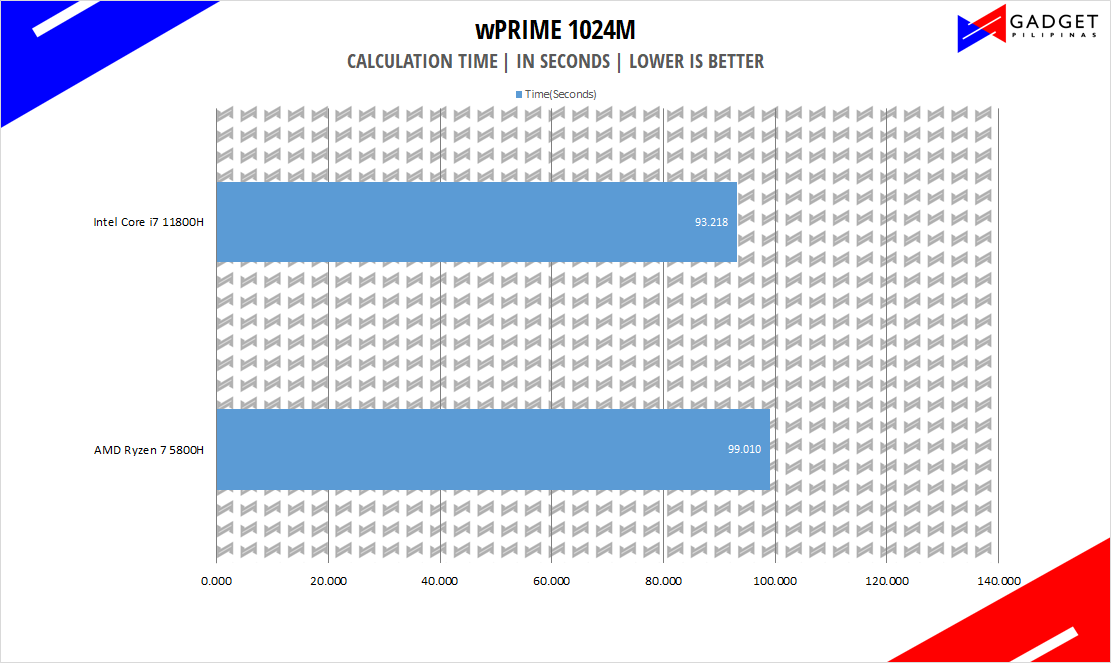 wPrime is a benchmark tool similar to SuperPI, but the former takes on finding prime numbers using Newton’s Method. The benchmark is set to calculate 1024 million prime numbers, and the performance is measured according to calculation time.
wPrime is a benchmark tool similar to SuperPI, but the former takes on finding prime numbers using Newton’s Method. The benchmark is set to calculate 1024 million prime numbers, and the performance is measured according to calculation time.
GeekBench 5
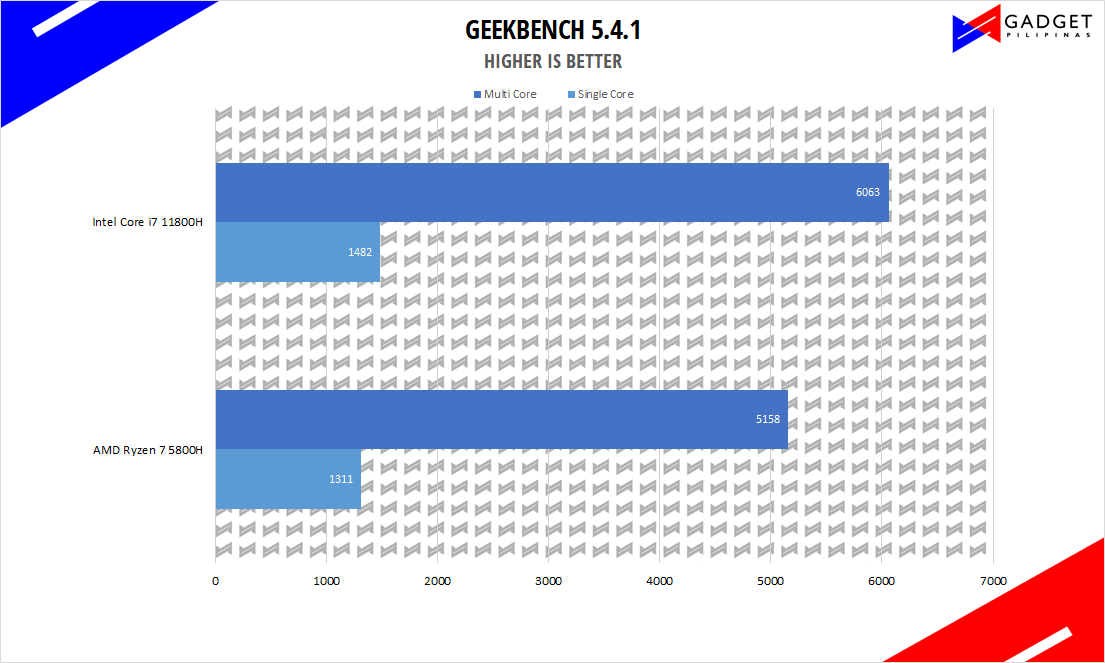 Geekbench is a multi-platform benchmark used to gauge CPU performance and compare them across Windows, Mac, and Mobile. Geekbench 5 is the latest version and doesn’t rely on memory than the previous Geekbench 4, making it a great tool to measure both single-core and multi-core CPU performance.
Geekbench is a multi-platform benchmark used to gauge CPU performance and compare them across Windows, Mac, and Mobile. Geekbench 5 is the latest version and doesn’t rely on memory than the previous Geekbench 4, making it a great tool to measure both single-core and multi-core CPU performance.
CINEBENCH R20 & R23
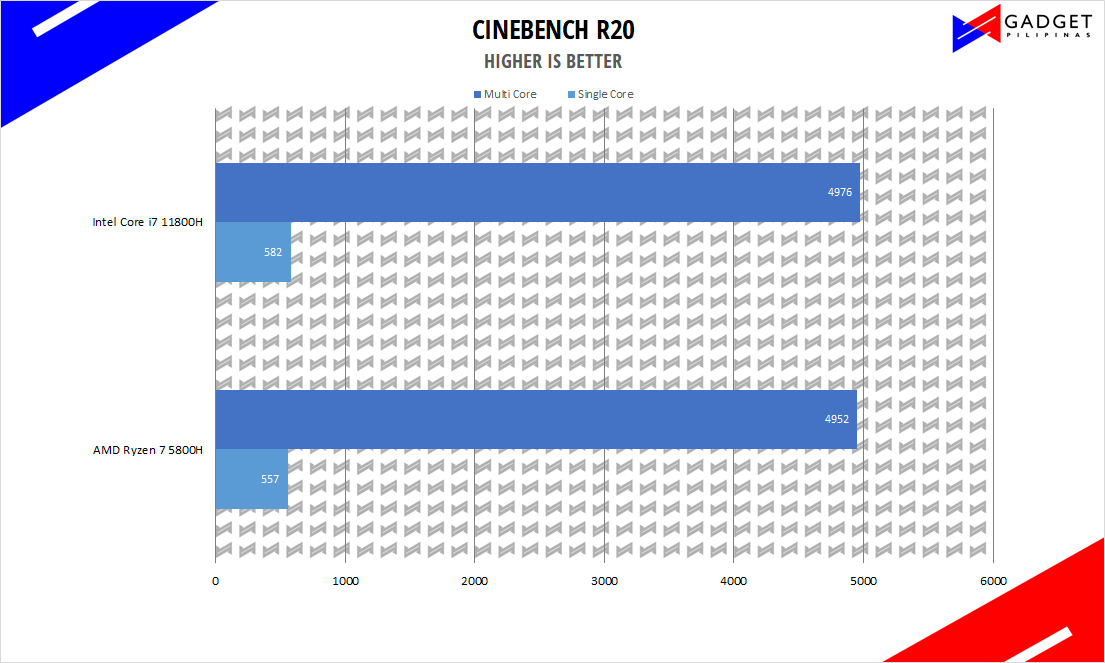
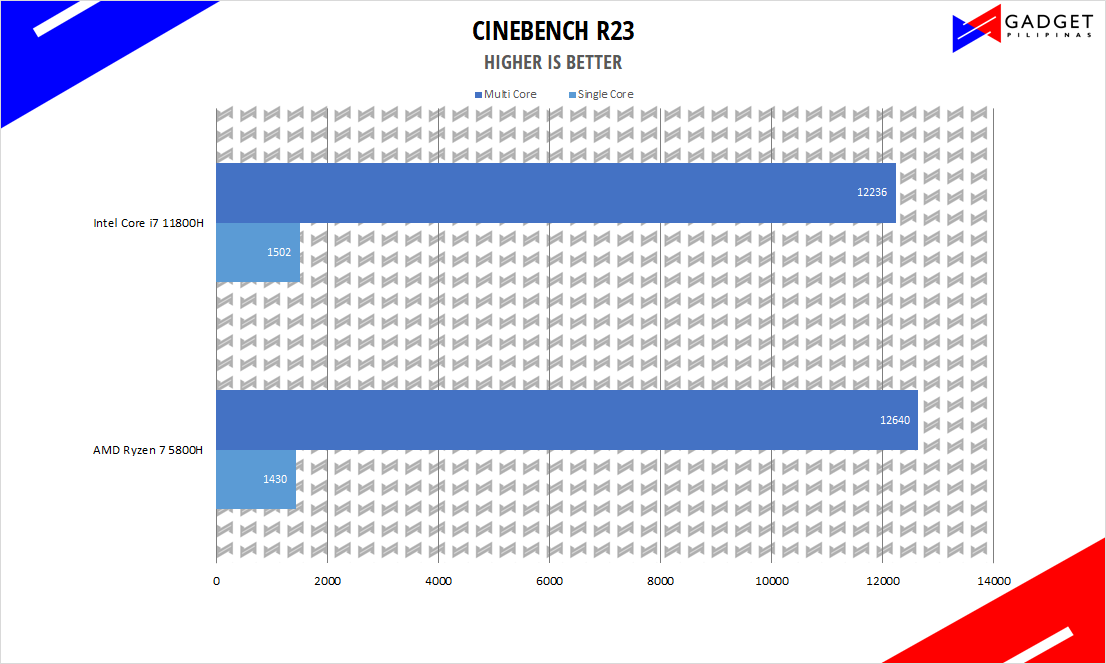
Maxon’s Cinebench benchmark is one of the most iconic benchmark applications used by reviewers and enthusiasts. The latest Cinebench R20 uses the latest rendering architectures, including Intel’s Embree ray tracing technology and other advanced features from AMD and Intel that allow users to render the same scene on the same hard. Cinebench R20 uses a larger and more complex testing scene than Cinebench R20 by about 8x computational power and requires 4x the memory.
GOOGLE OCTANE 2.0
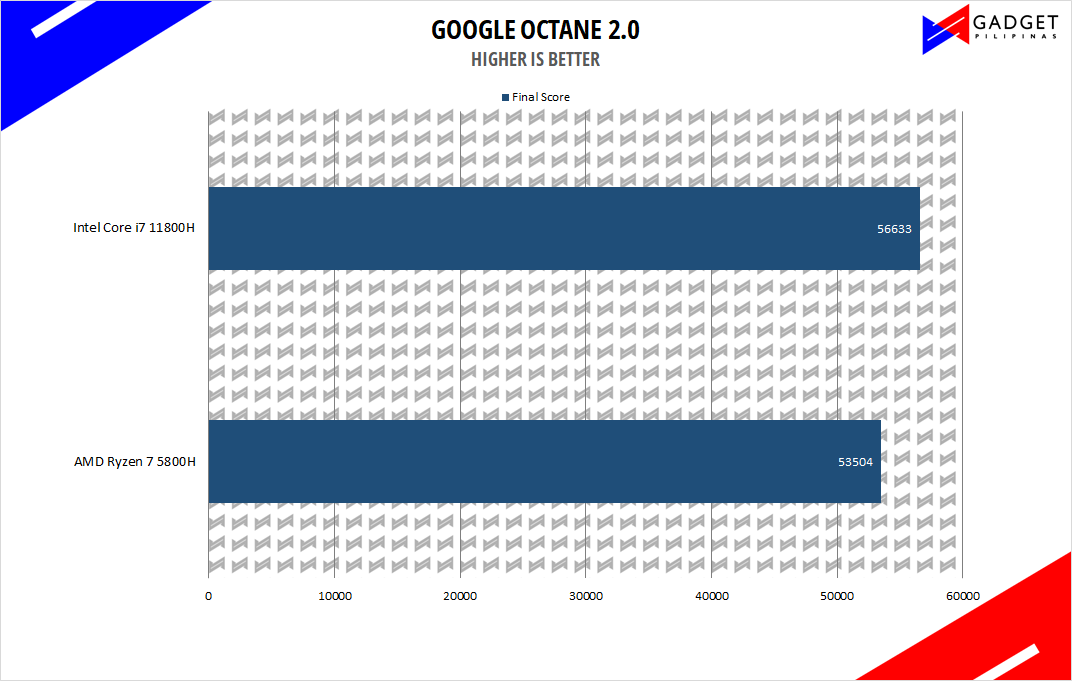 Google Octane 2.0 is a benchmark that measures a Javascript engine’s performance by running multiple tests representing different use cases of JavaScript applications. While Google Octane is retired and no longer maintained, it is still a good representation of today’s dynamic, interactive web applications. Our Google Octane 2.0 is run on Microsoft’s latest Chromium-based Edge browser.
Google Octane 2.0 is a benchmark that measures a Javascript engine’s performance by running multiple tests representing different use cases of JavaScript applications. While Google Octane is retired and no longer maintained, it is still a good representation of today’s dynamic, interactive web applications. Our Google Octane 2.0 is run on Microsoft’s latest Chromium-based Edge browser.
V-RAY
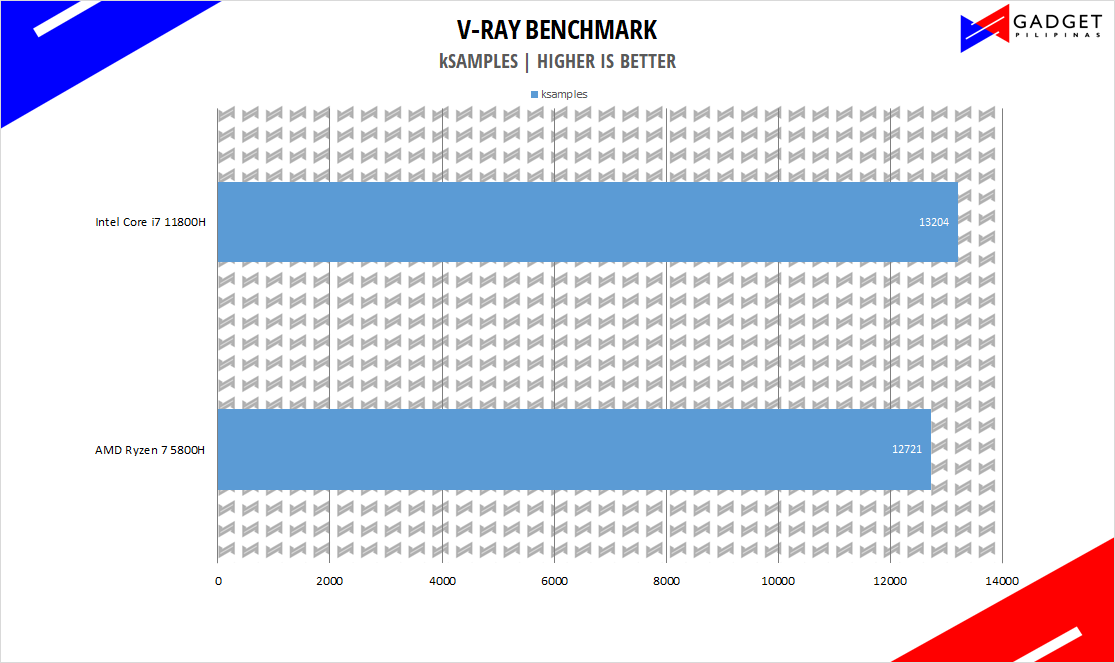 V-Ray Benchmark is a stand-alone version V-Ray developed by Chaos Group. It is designed to test the CPU and GPU by rendering sample scenes at a fixed amount of time. V-Ray is a plug-in mostly utilized by 3D computer graphics software applications mainly for industrial design, product design, architecture, film, and video game production. V-Ray is not limited to 64-threads as it supports multi and mega-threading.
V-Ray Benchmark is a stand-alone version V-Ray developed by Chaos Group. It is designed to test the CPU and GPU by rendering sample scenes at a fixed amount of time. V-Ray is a plug-in mostly utilized by 3D computer graphics software applications mainly for industrial design, product design, architecture, film, and video game production. V-Ray is not limited to 64-threads as it supports multi and mega-threading.
BLENDER
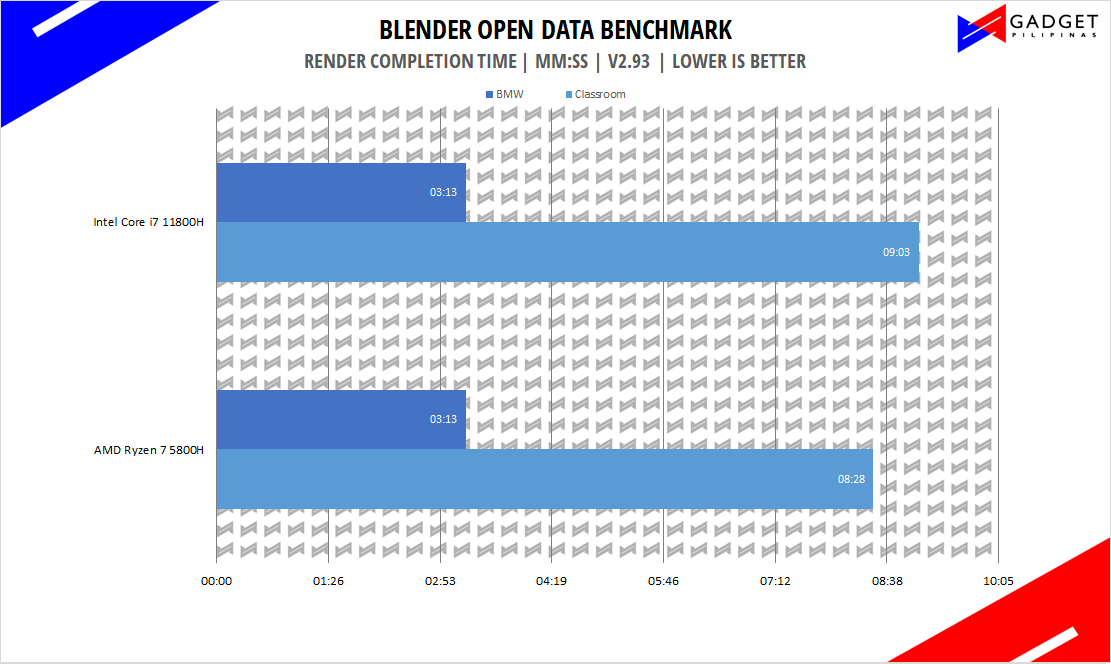 Blender is a widely used, free, opensource 3D creation suite. It supports the whole 3D pipeline process from modeling, rigging, animation, simulation, rendering, and even motion tracking. Blender has become a standard for CPU benchmarks with the BMW27 and Classroom scene most used. This prompted the company to release Blender Open Data Benchmark in 2018, a benchmark-specific version which allows users to run a preset benchmark and share the results online similar to 3D Mark.
Blender is a widely used, free, opensource 3D creation suite. It supports the whole 3D pipeline process from modeling, rigging, animation, simulation, rendering, and even motion tracking. Blender has become a standard for CPU benchmarks with the BMW27 and Classroom scene most used. This prompted the company to release Blender Open Data Benchmark in 2018, a benchmark-specific version which allows users to run a preset benchmark and share the results online similar to 3D Mark.
CORONA RENDERER
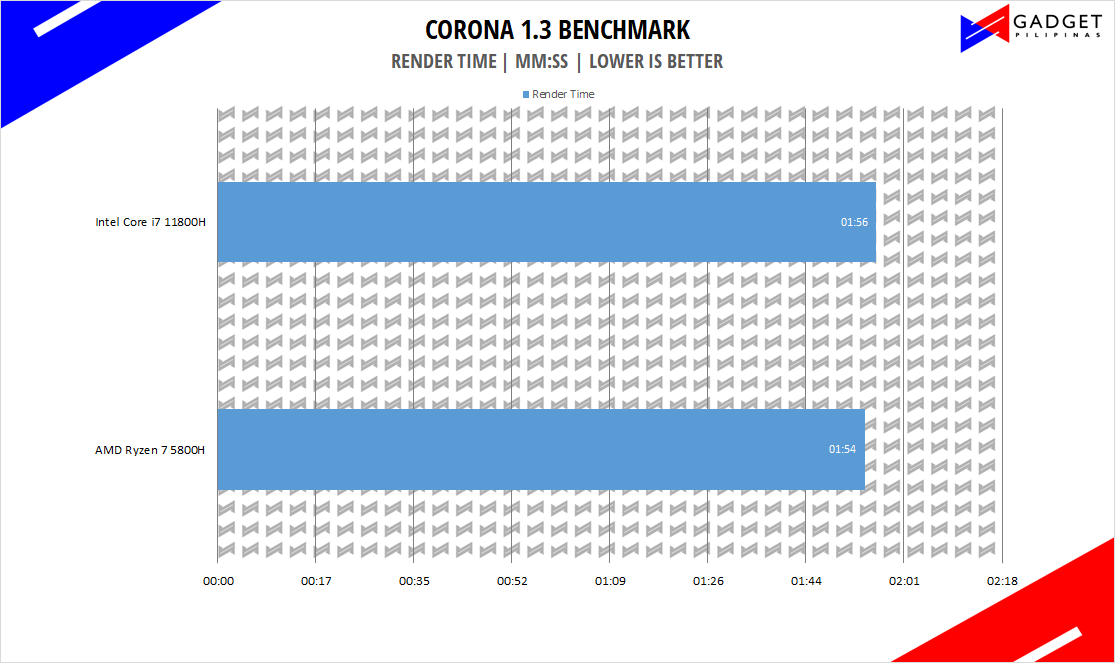 Corona Renderer is an unbiased photorealistic render available for Autodesk 3Ds Max, Maxon Cinema 4D, and as a stand-alone application. Its popularity, similar to Blender, led Chaos Group to develop a benchmark version of the app which runs using Corona Renderer 1.3. Workstation systems, especially CPUs, can utilize Corona Benchmark as up to 72 threads can be used in the benchmark, making it very suitable for CPUs with various price segments.
Corona Renderer is an unbiased photorealistic render available for Autodesk 3Ds Max, Maxon Cinema 4D, and as a stand-alone application. Its popularity, similar to Blender, led Chaos Group to develop a benchmark version of the app which runs using Corona Renderer 1.3. Workstation systems, especially CPUs, can utilize Corona Benchmark as up to 72 threads can be used in the benchmark, making it very suitable for CPUs with various price segments.
PCMark10
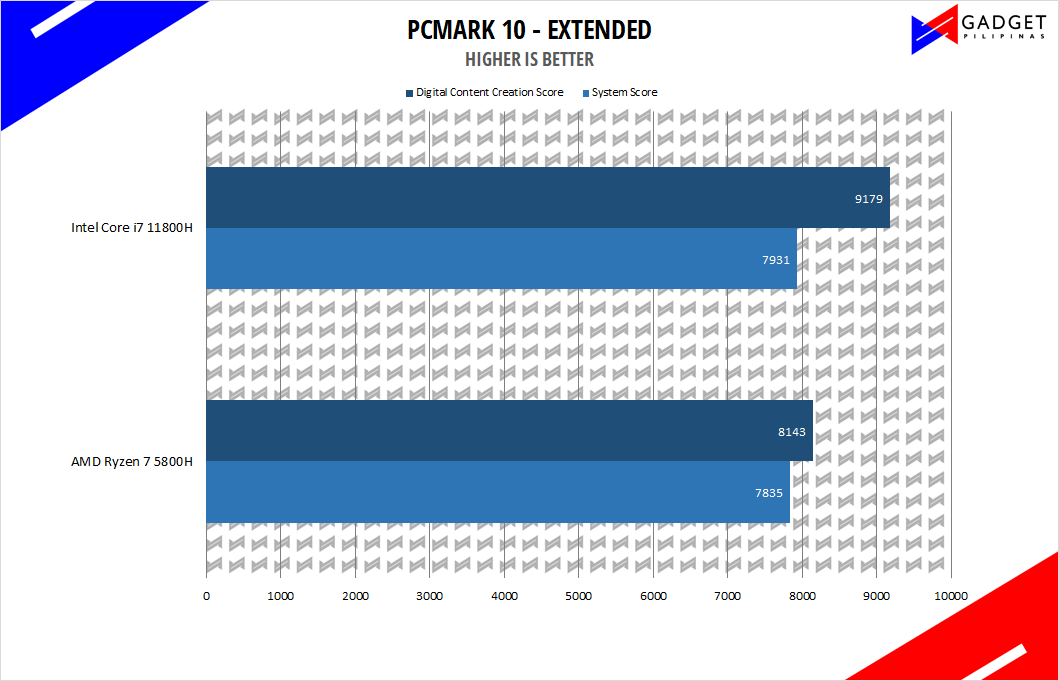 From the same developers of the popular game benchmarking tool 3DMark, PCMark 10 is a benchmarking app for measure a whole PC’s performance. It covers a wide variety of tests to reflect common tasks performed in a modern workplace. We selected PCMark 10’s extended benchmark and reported both the overall score and Digital Content Creation Score.
From the same developers of the popular game benchmarking tool 3DMark, PCMark 10 is a benchmarking app for measure a whole PC’s performance. It covers a wide variety of tests to reflect common tasks performed in a modern workplace. We selected PCMark 10’s extended benchmark and reported both the overall score and Digital Content Creation Score.
3DMARK

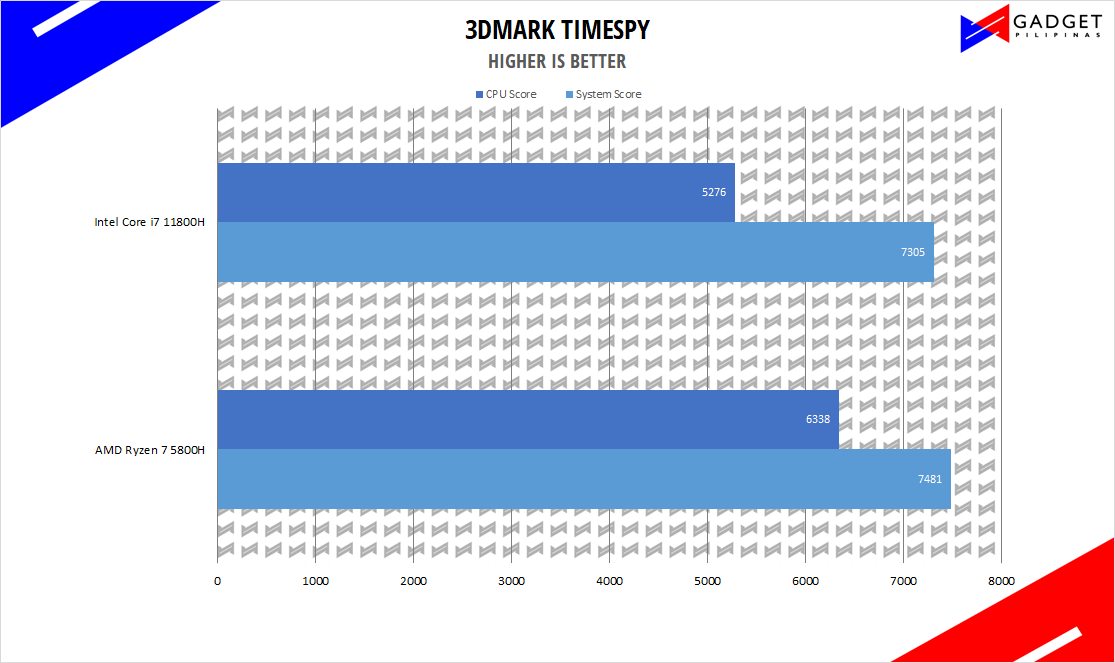
3DMark is the go-to benchmark for gamers because of the ability to share and compare results online. We used Time Spy DirectX 12 benchmark and Fire Strike DirectX 11 benchmark to gauge the CPU’s performance using different APIs.
11800H vs 5800H Gaming Benchmarks
DOTA 2
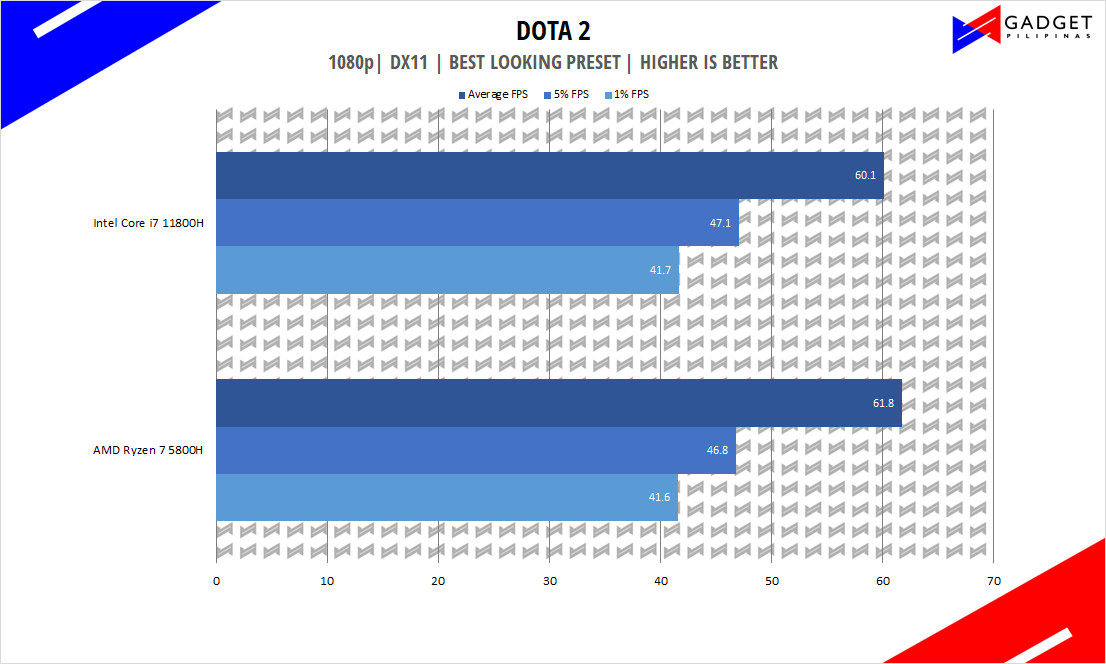 Most gamers play at least one of the following free-to-play titles: League of Legends, CS: GO, Dota 2, and/or Fortnite. Dota 2 is a good representation of the F2P titles as it is the most demanding game in the spectrum. The benchmark will give you an idea of the laptop’s relative performance on other lesser demanding titles. Our benchmark sequence is based on a replay of OG vs. Liquid in the TI9 grand finals from the team fight that happened from 28:30 to 29:30.
Most gamers play at least one of the following free-to-play titles: League of Legends, CS: GO, Dota 2, and/or Fortnite. Dota 2 is a good representation of the F2P titles as it is the most demanding game in the spectrum. The benchmark will give you an idea of the laptop’s relative performance on other lesser demanding titles. Our benchmark sequence is based on a replay of OG vs. Liquid in the TI9 grand finals from the team fight that happened from 28:30 to 29:30.
Far Cry 5
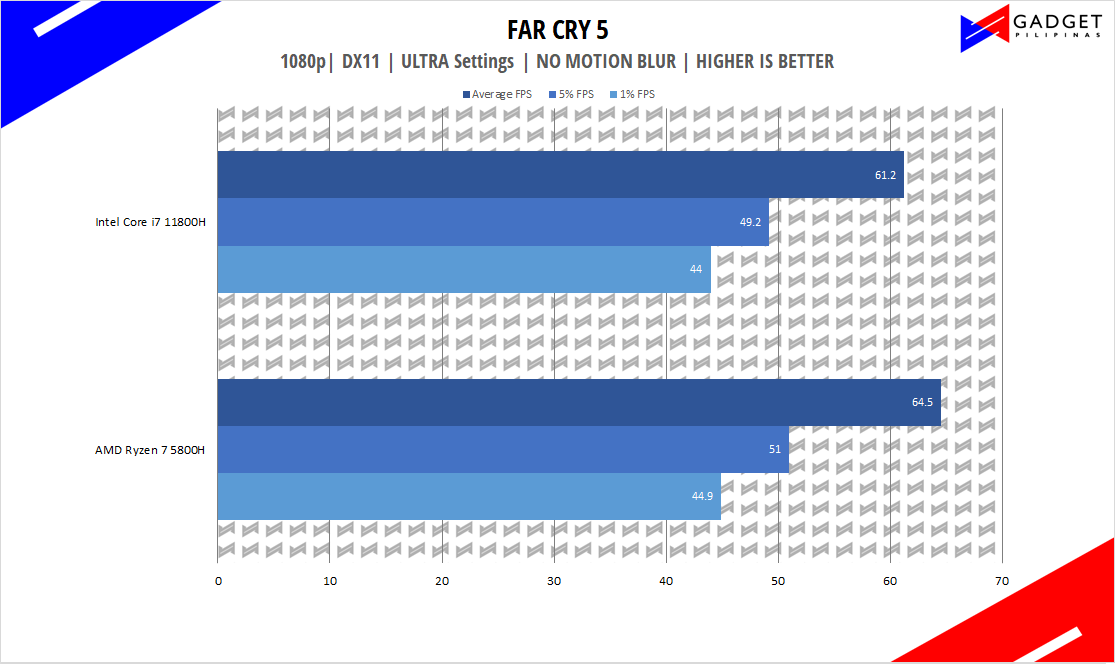 FarCry 5 is an FPS game published by Ubisoft and uses the Dunia engine. It heavily relies on and takes advantage of DirectX 11 to render a realistic environment that makes it taxing to both the CPU and GPU.
FarCry 5 is an FPS game published by Ubisoft and uses the Dunia engine. It heavily relies on and takes advantage of DirectX 11 to render a realistic environment that makes it taxing to both the CPU and GPU.
Rainbow Six Siege
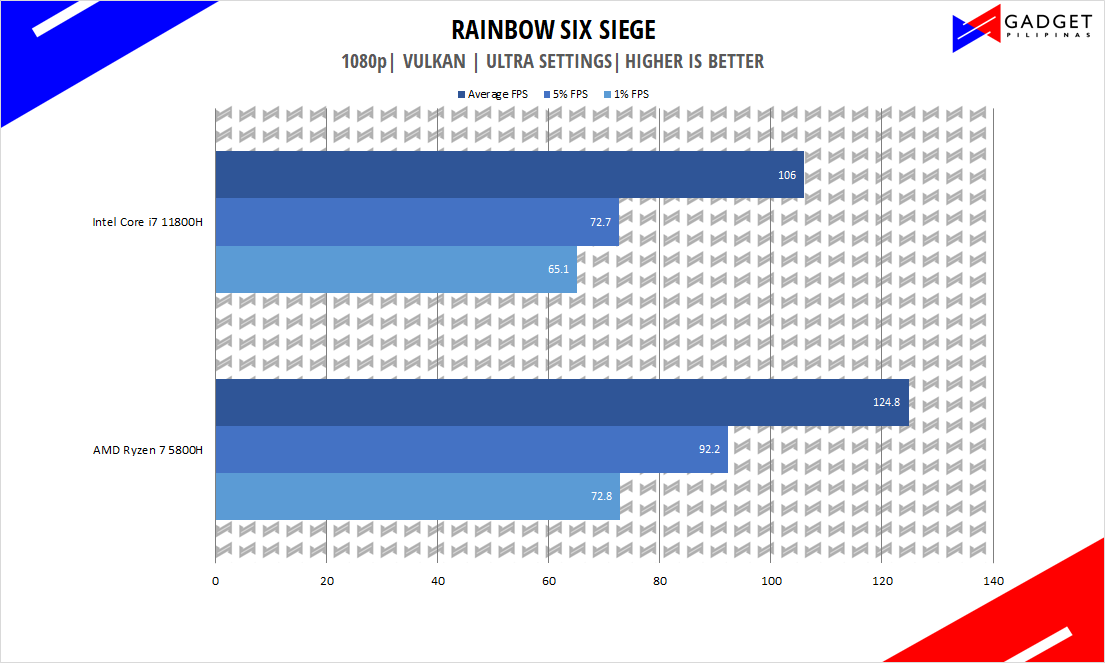 Rainbow Six Seige is one of the few popular AAA games that’s still popular in 2019 due to its competitive gameplay mechanics. R6S uses the AnvilNext game engine, which is developed by the game’s publisher, Ubisoft. As of writing, Rainbow Six Siege is currently the most popular Tom Clancy title beating out Wildlands, Breakpoint and even, Division 2.
Rainbow Six Seige is one of the few popular AAA games that’s still popular in 2019 due to its competitive gameplay mechanics. R6S uses the AnvilNext game engine, which is developed by the game’s publisher, Ubisoft. As of writing, Rainbow Six Siege is currently the most popular Tom Clancy title beating out Wildlands, Breakpoint and even, Division 2.
Cyberpunk 2077
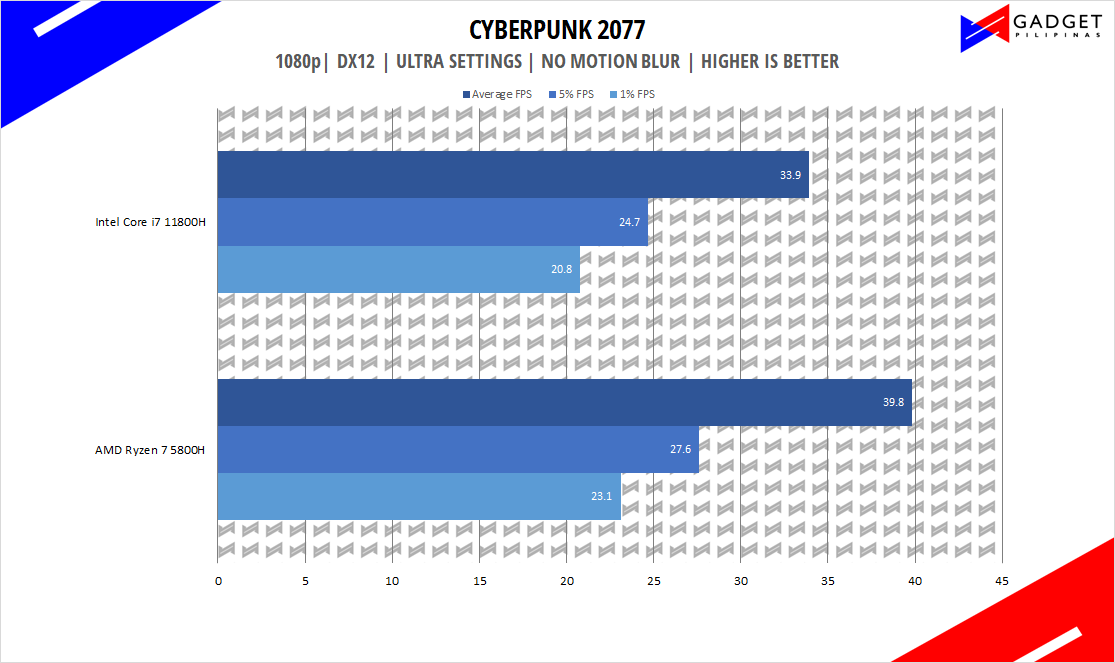 Cyberpunk 2077 is arguably the most hyped game of 2020. Developed by CD Projekt Red, the dystopian open-world, action-adventure RPG sports is one of the most demanding titles to date. Cyberpunk 2077 also supports three Ray Tracing settings as well as DLSS which makes the game a great tool to measure Ray tracing performance for both AMD and Nvidia graphics cards.
Cyberpunk 2077 is arguably the most hyped game of 2020. Developed by CD Projekt Red, the dystopian open-world, action-adventure RPG sports is one of the most demanding titles to date. Cyberpunk 2077 also supports three Ray Tracing settings as well as DLSS which makes the game a great tool to measure Ray tracing performance for both AMD and Nvidia graphics cards.
Horizon Zero Dawn
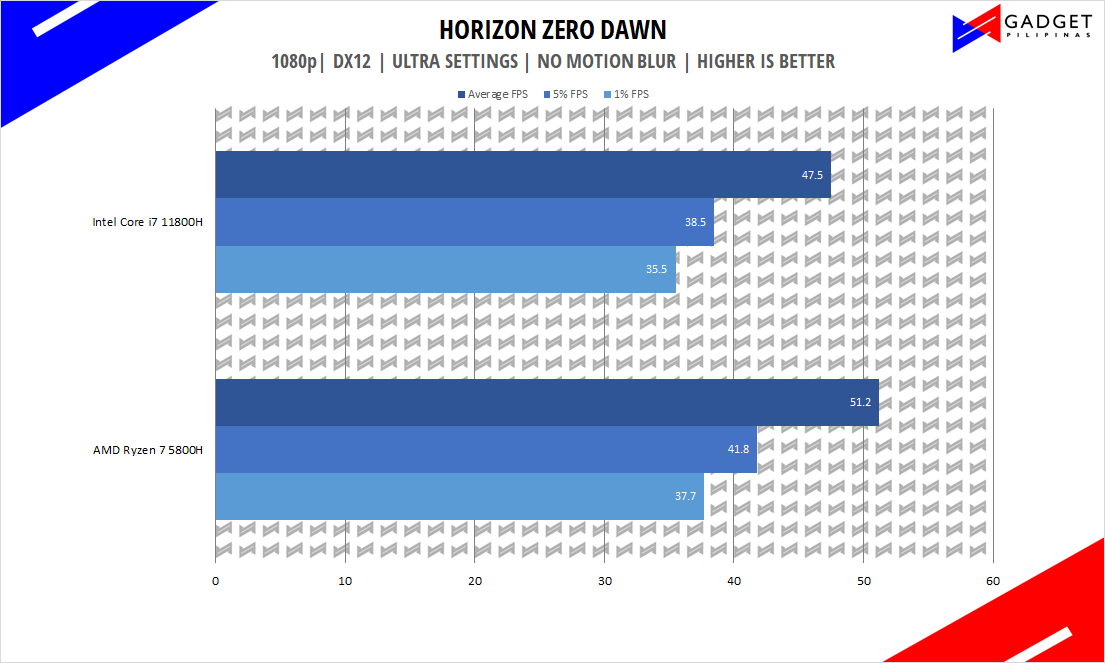 Horizon Zero Dawn is one of the most popular console-port RPG developed by Guerilla Games and published by Sony Interactive Entertainment. Horizon Zero Dawn is a multi-award-winning action RPG and its popularity resulted in an exclusive Complete Edition game bundle in Steam.
Horizon Zero Dawn is one of the most popular console-port RPG developed by Guerilla Games and published by Sony Interactive Entertainment. Horizon Zero Dawn is a multi-award-winning action RPG and its popularity resulted in an exclusive Complete Edition game bundle in Steam.
Assassin’s Creed: Odyssey
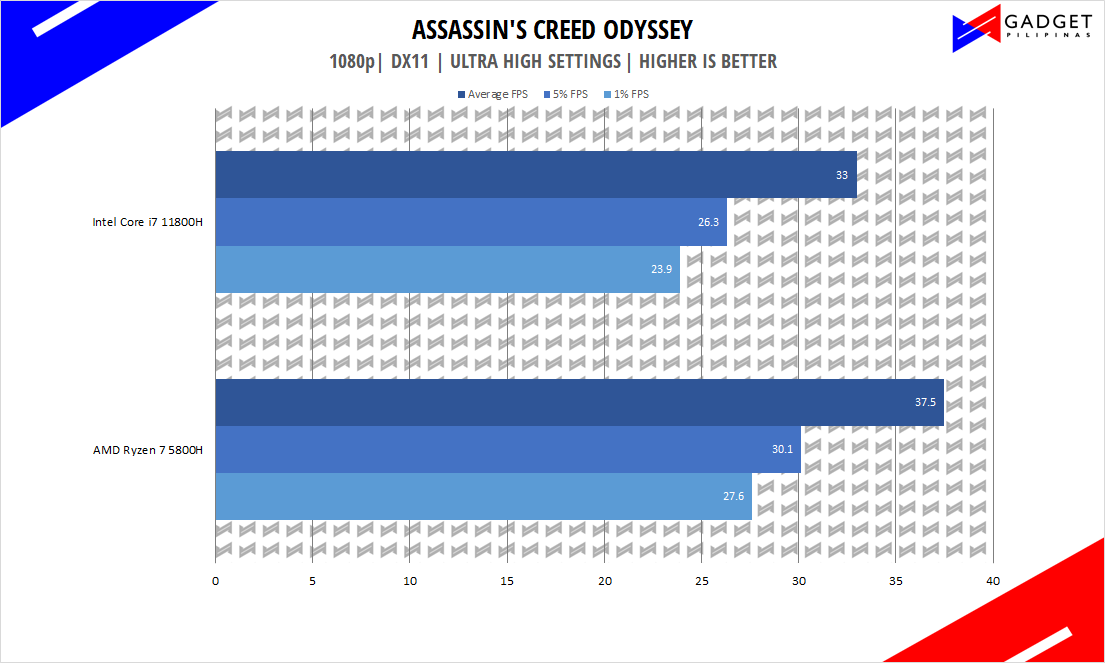 Assassin’s Creed Odyssey is the latest franchise installment from Ubisoft. It’s by far the most popular and stable Assassin’s Creed title since AC IV: Black Flag. It uses the AnvilNext 2.0 game engine, an updated version of Rainbow Six Siege’s game engine, and uses the DirectX 12 API.
Assassin’s Creed Odyssey is the latest franchise installment from Ubisoft. It’s by far the most popular and stable Assassin’s Creed title since AC IV: Black Flag. It uses the AnvilNext 2.0 game engine, an updated version of Rainbow Six Siege’s game engine, and uses the DirectX 12 API.
F1 2020
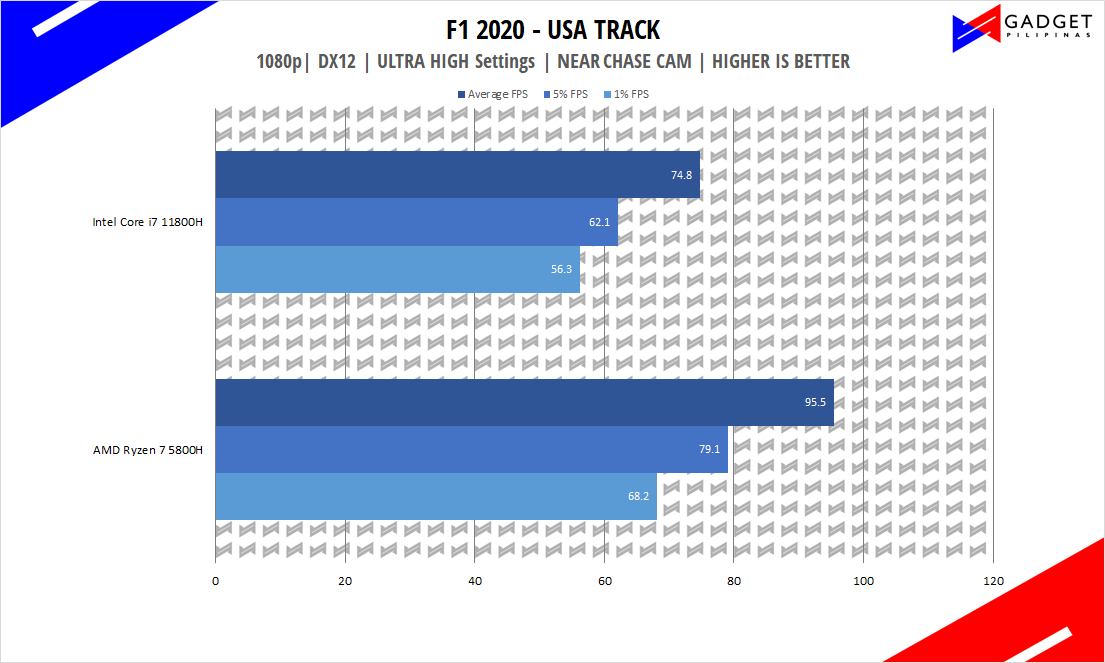 F1 2020 is the official video game of the 2020 Formula 1 and Formula 2 championships developed by Codemasters. F1 2020 is the twelfth installment in the franchise and uses the Ego Engine 3.0. F1 2020 is a good representation of racing games thanks to its realistic graphics and fairly demanding spec requirements.
F1 2020 is the official video game of the 2020 Formula 1 and Formula 2 championships developed by Codemasters. F1 2020 is the twelfth installment in the franchise and uses the Ego Engine 3.0. F1 2020 is a good representation of racing games thanks to its realistic graphics and fairly demanding spec requirements.
Shadow of The Tomb Raider
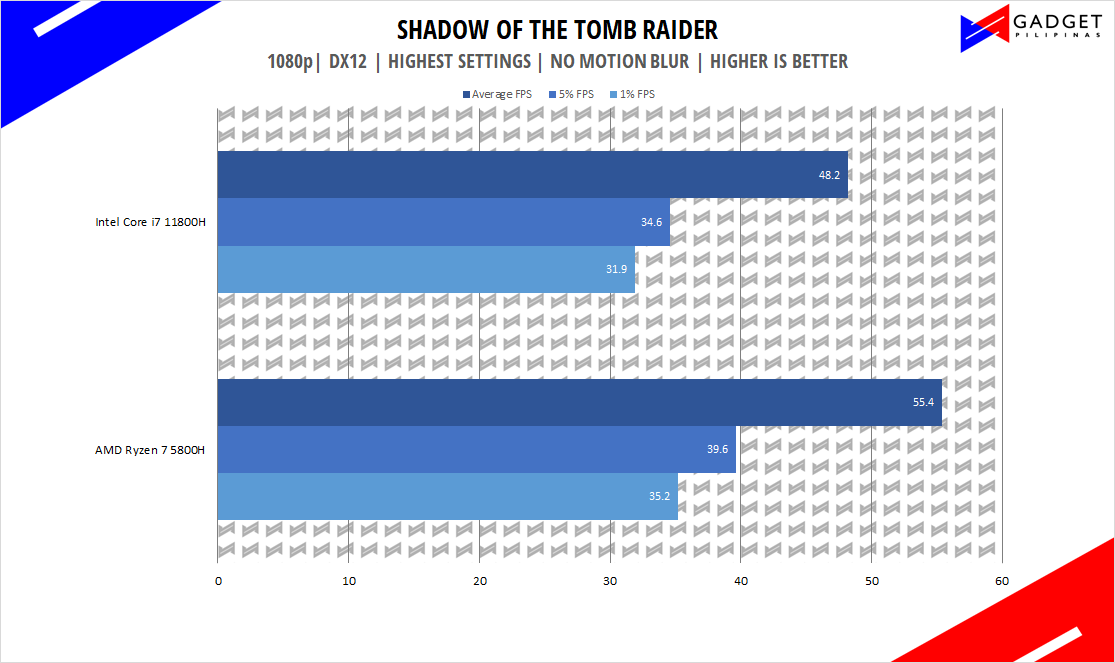 Shadow of The Tomb Raider or SOTR is the latest installment of the Lara Croft Tomb Raider franchise. Developed by Square Enix, SOTR uses the Foundation engine and is further enhanced by Eidos Montreal. STOR is also one of the first games to come out with Ray Tracing and DLSS support.
Shadow of The Tomb Raider or SOTR is the latest installment of the Lara Croft Tomb Raider franchise. Developed by Square Enix, SOTR uses the Foundation engine and is further enhanced by Eidos Montreal. STOR is also one of the first games to come out with Ray Tracing and DLSS support.
Metro Exodus
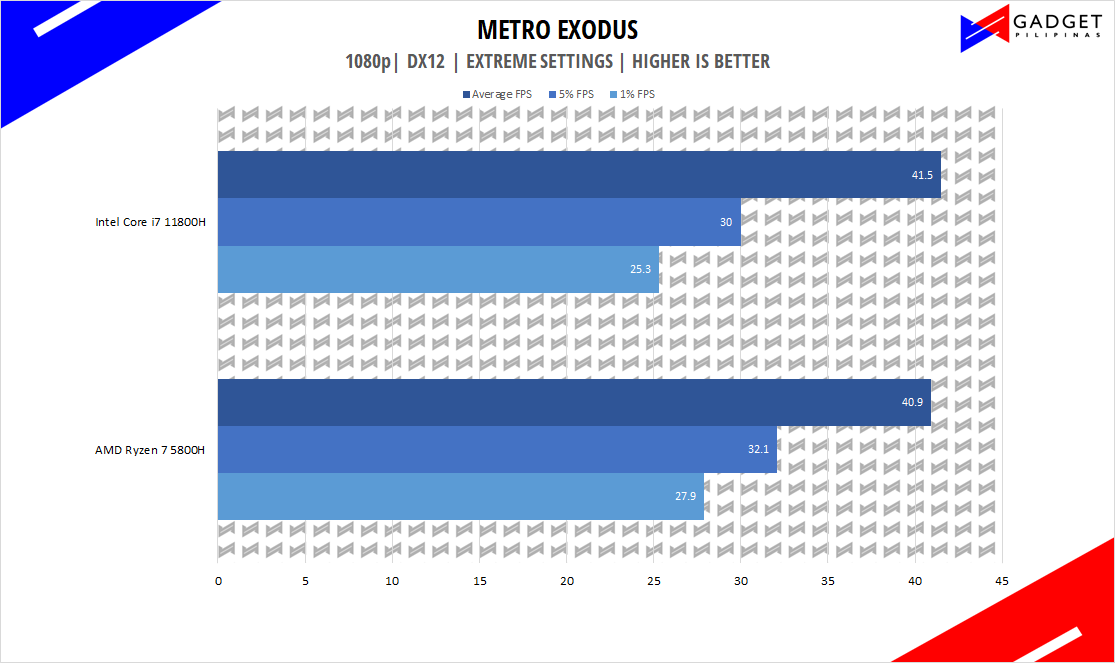 Metro Exodus is the third Metro game trilogy based on Dmitry Glukhovsky’s novels. The game is a first-person shooter with survival horror and stealth elements. The post-apocalyptic game is using 4A Engine by 4A games. Released last 2019, Metro Exodus remains to be one of the most graphically pleasing and demanding games that’s popular to date.
Metro Exodus is the third Metro game trilogy based on Dmitry Glukhovsky’s novels. The game is a first-person shooter with survival horror and stealth elements. The post-apocalyptic game is using 4A Engine by 4A games. Released last 2019, Metro Exodus remains to be one of the most graphically pleasing and demanding games that’s popular to date.
Gaming Performance Summary
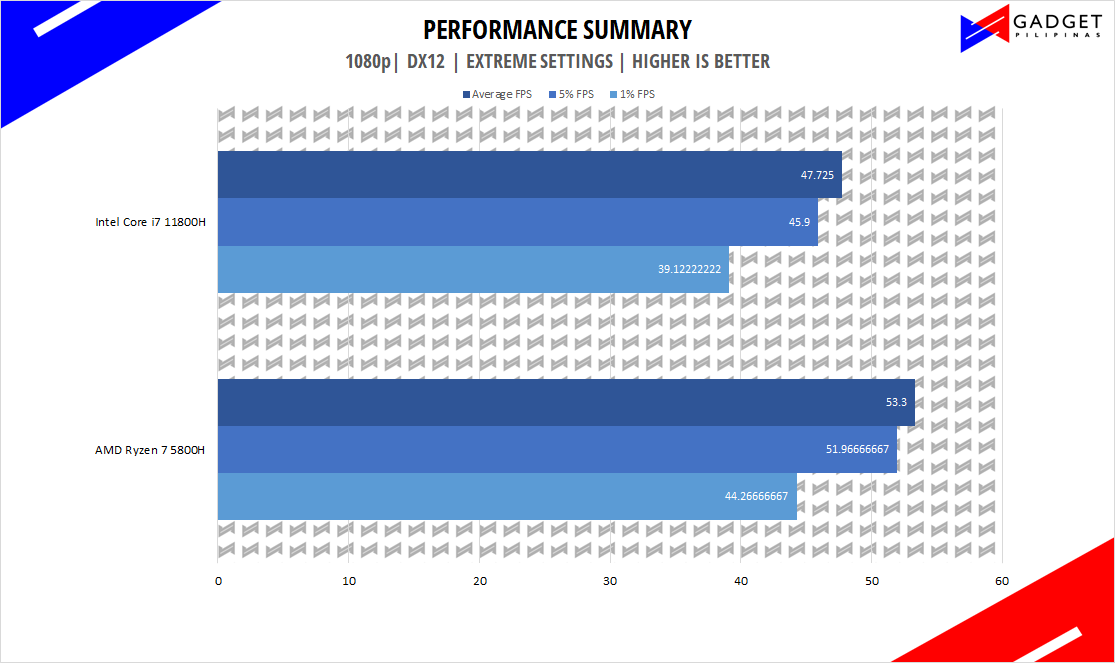 Intel’s Turbo Boost Max Technology provides an upper hand for the Intel Core i7 11800H in single-threaded workloads as well as in short bursts of multithreaded workload. Intel’s single-core performance proves to be a significant advantage in older applications as these apps aren’t designed to take advantage of extra cores or threads. That said, Intel still has room for improvement in terms of multi-threaded performance as it slightly lags behind the AMD Ryzen 7 4800H but frankly speaking, not by a lot since the 5-10% performance difference in both synthetics and gaming can be attributed to the lithographies of both brands as evidenced by Willow Cove’s upper hand in single-core performance. That said, for anything not gaming-related and especially in short workloads, the Core i7 11800H is simply unmatched whereas gaming is still a toss between the two brands as games make us of CPUs differently especially in different genres which require more computing power.
Intel’s Turbo Boost Max Technology provides an upper hand for the Intel Core i7 11800H in single-threaded workloads as well as in short bursts of multithreaded workload. Intel’s single-core performance proves to be a significant advantage in older applications as these apps aren’t designed to take advantage of extra cores or threads. That said, Intel still has room for improvement in terms of multi-threaded performance as it slightly lags behind the AMD Ryzen 7 4800H but frankly speaking, not by a lot since the 5-10% performance difference in both synthetics and gaming can be attributed to the lithographies of both brands as evidenced by Willow Cove’s upper hand in single-core performance. That said, for anything not gaming-related and especially in short workloads, the Core i7 11800H is simply unmatched whereas gaming is still a toss between the two brands as games make us of CPUs differently especially in different genres which require more computing power.
CPU Temperatures 11800H vs 5800H
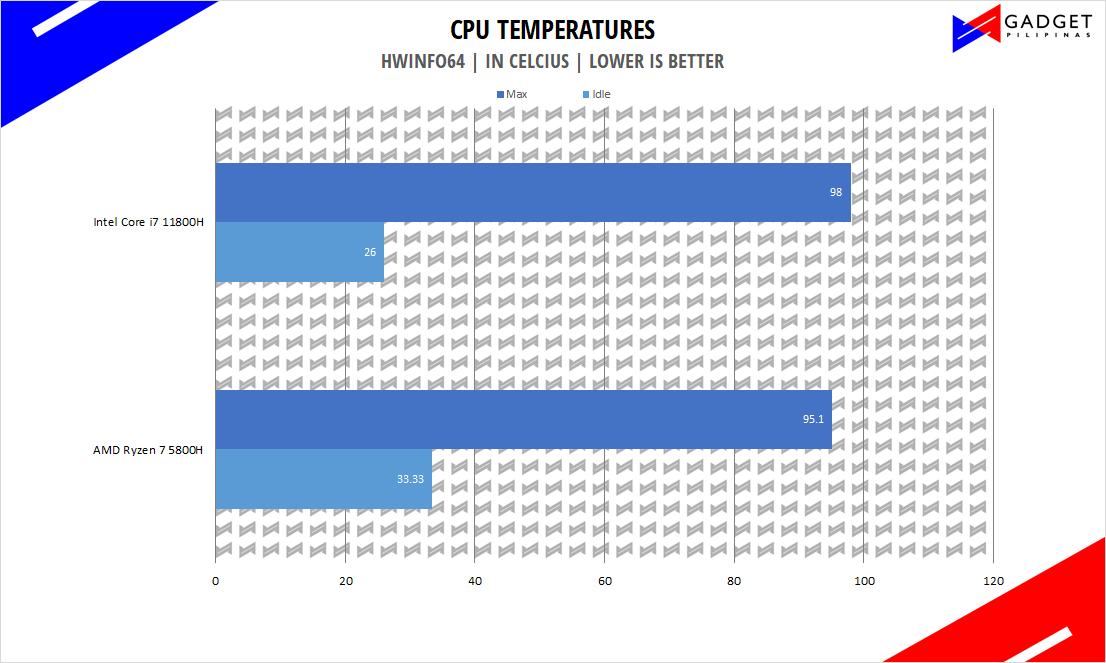 CPU Temperatures are recorded using the latest version of HWInfo64. The recorded idle and max temperatures are taken from the whole benchmark run of each laptop from Synthetic benchmarks to Gaming benchmarks. Having an identical cooling system for the TUF A15 and F15 laptops, the Intel Core i7 11800H runs at a lower idle temp of 26°C, about 7°C lower than 7-nanometer Ryzen 7 5800H. However, Intel’s aggressive power draw brought upon by a bigger 10nm lithography sets the Core i7 11800H at a hotter 98°C which is just 2°C before we hit our TJMax temperatures. Luckily the cooling system on the the latest TUF laptops is more than enough to keep both CPUs from thermal throttling. That said it’s also worth noting that the CPUs are paired with an RTX 3060, having a more powerful GPU will surely present different results.
CPU Temperatures are recorded using the latest version of HWInfo64. The recorded idle and max temperatures are taken from the whole benchmark run of each laptop from Synthetic benchmarks to Gaming benchmarks. Having an identical cooling system for the TUF A15 and F15 laptops, the Intel Core i7 11800H runs at a lower idle temp of 26°C, about 7°C lower than 7-nanometer Ryzen 7 5800H. However, Intel’s aggressive power draw brought upon by a bigger 10nm lithography sets the Core i7 11800H at a hotter 98°C which is just 2°C before we hit our TJMax temperatures. Luckily the cooling system on the the latest TUF laptops is more than enough to keep both CPUs from thermal throttling. That said it’s also worth noting that the CPUs are paired with an RTX 3060, having a more powerful GPU will surely present different results.
Battery Life 11800H vs 5800H
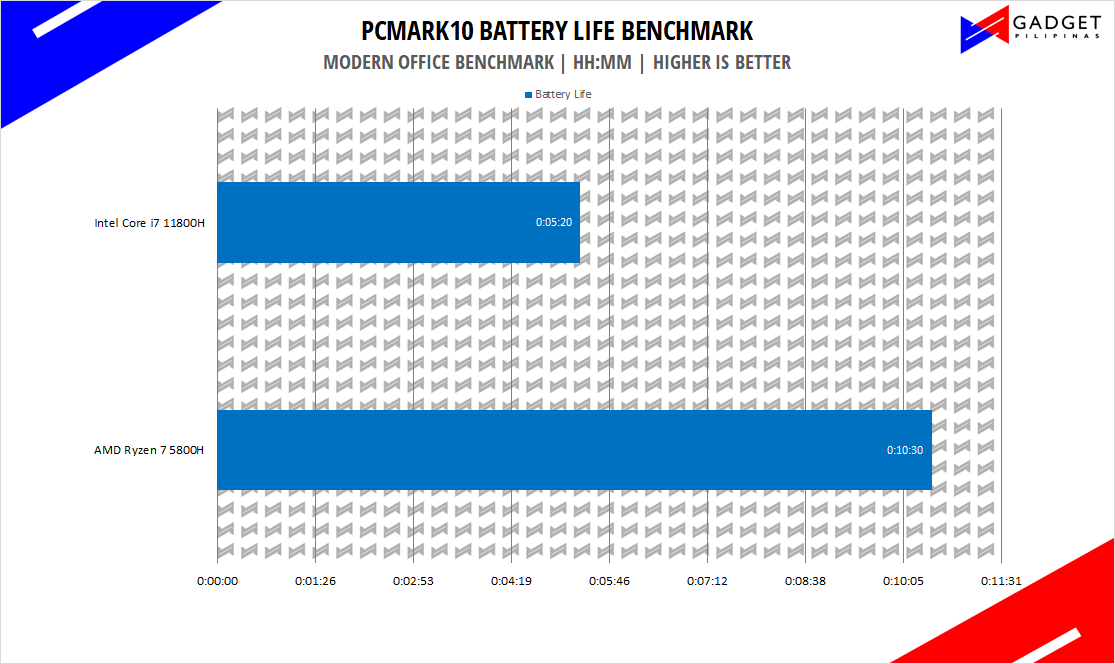
Despite all the small victories garnered by Intel, AMD sweeps the floor in terms of battery life as it takes last more than double the duration of the Core i7 11800H. PCMark 10’s Modern Office Benchmark uses a wide range of applications such as video conference apps, browser, and office applications to simulate a real-world usage to drain the laptop’s battery. Since apps are switched from time to time, Intel’s PL2 kicks in more frequently resulting in more power draw as a tradeoff of having a smoother experience. Nonetheless, five hours’ worth of battery life for a gaming laptop is a massive improvement compared to previous generations’ measly 2 to 3hours.
Final Thoughts: 11800H or 5800H?
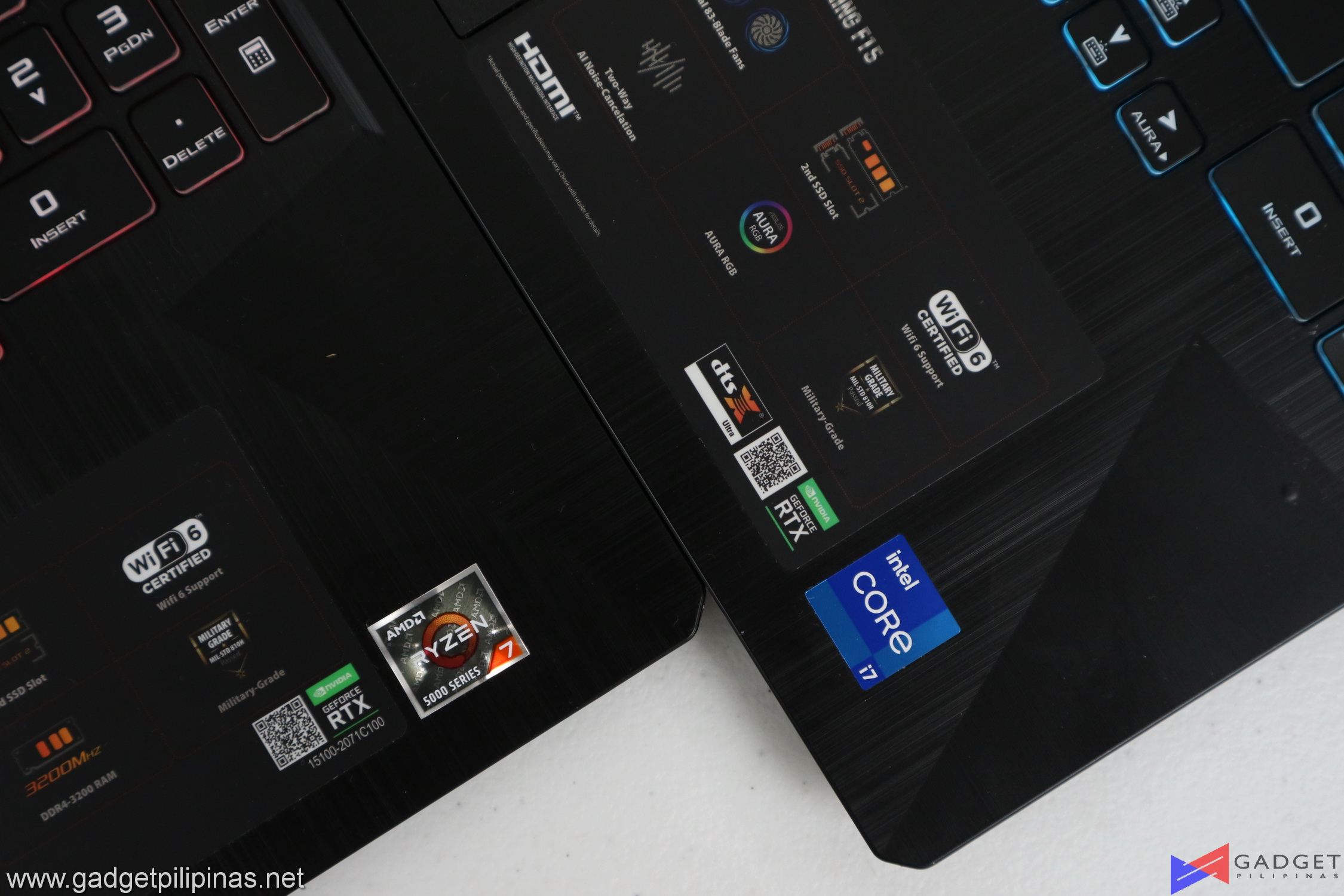 After getting the chance to finally have an apples-to-apples comparison of mobile laptops, we honestly thought it would be an easier choice to decide which one is better as a standalone processor and not the whole laptop package. As we isolate the processors from other components it makes it hard to decide which should be the go-to processor especially at the Php 85,000 price range where both the TUF F15 and TUF A15 stand. But one thing is clear: Intel’s 10 nanometer Tiger Lake-S processor under the willow cove architecture is by no means behind AMD’s 7-nanometer Zen 2 Architecture as seen across our benchmark suite. Gone are the days where people say that Intel is only good in gaming as the latest 11th Gen processors represented by the Intel Core i7 11800H can plow through the latest AAA titles as well as handle intense productivity workloads with ease.
After getting the chance to finally have an apples-to-apples comparison of mobile laptops, we honestly thought it would be an easier choice to decide which one is better as a standalone processor and not the whole laptop package. As we isolate the processors from other components it makes it hard to decide which should be the go-to processor especially at the Php 85,000 price range where both the TUF F15 and TUF A15 stand. But one thing is clear: Intel’s 10 nanometer Tiger Lake-S processor under the willow cove architecture is by no means behind AMD’s 7-nanometer Zen 2 Architecture as seen across our benchmark suite. Gone are the days where people say that Intel is only good in gaming as the latest 11th Gen processors represented by the Intel Core i7 11800H can plow through the latest AAA titles as well as handle intense productivity workloads with ease.
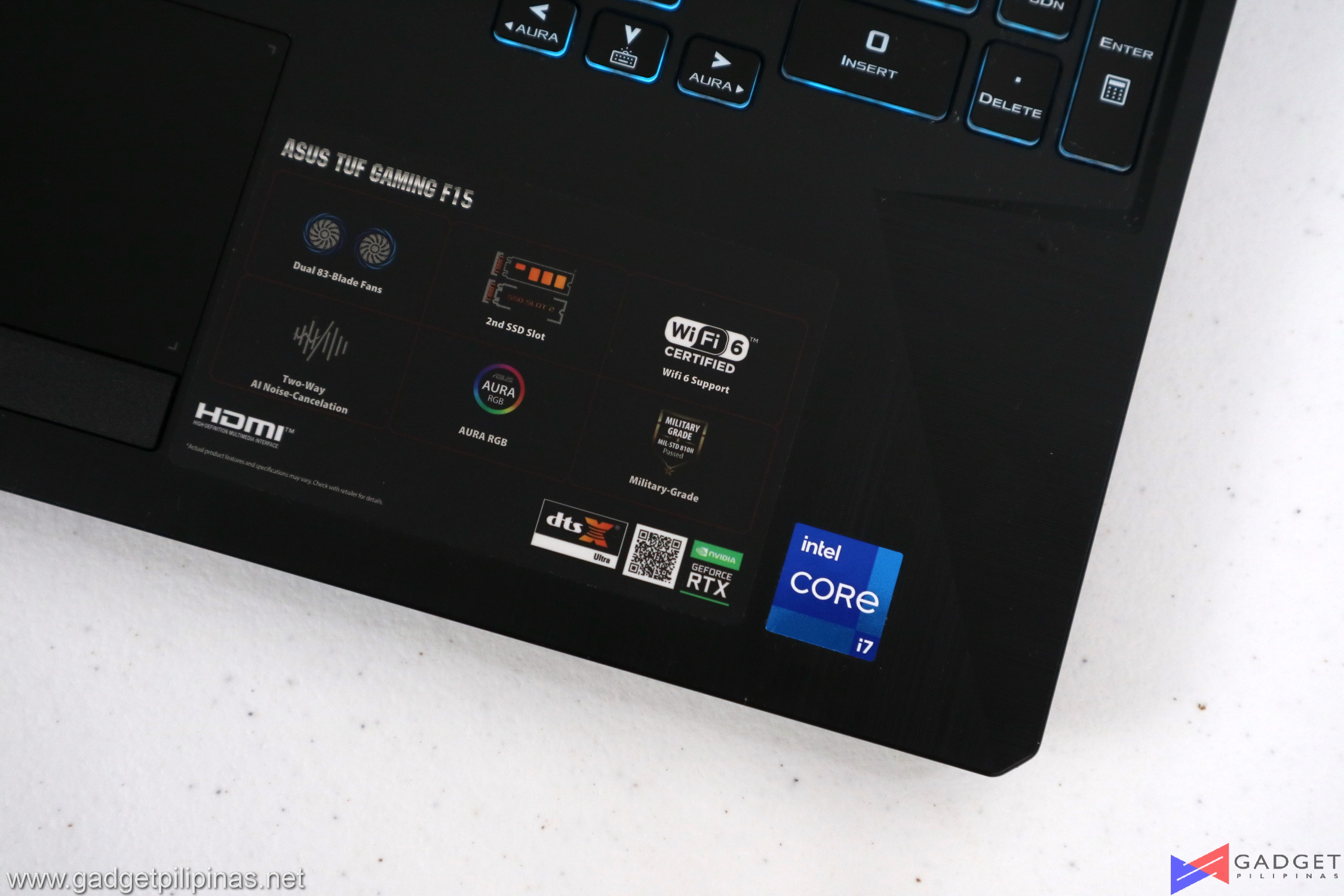 Going back to the question on which is the better CPU, the Core i7 11800H or the AMD Ryzen 5 5800H? The answer is, it depends. While you really can’t separate the mobile processor from the entirety of the laptop itself, these processors extend their value to the rest of the laptop’s configurations. To this date, AMD Ryzen processors can only be found up to mid-range laptops whilst Intel is the go-to processor for most OEMs as we see their i9 variant and even the i7 variant in Php 150k(USD 3000)+ configurations. That said, Intel still has the flaws that they have to work on such as its battery life and power-hungry nature. If you’re willing to look past 11th Gen’s battery life and have no issue with its power draw, then the Intel Core i7 11800H is a jack of all trades processor that can keep up with almost any workload. If not, then AMD is there to welcome your needs. Do note that at the end of the day, it’s the overall components that come with processors that will make or break your experience. There’s no clear-cut winner as to AMD or Intel for this Php 85k comparo as we still need to go inspect various price levels to see how cooling and other internals bring out the best of each processor.
Going back to the question on which is the better CPU, the Core i7 11800H or the AMD Ryzen 5 5800H? The answer is, it depends. While you really can’t separate the mobile processor from the entirety of the laptop itself, these processors extend their value to the rest of the laptop’s configurations. To this date, AMD Ryzen processors can only be found up to mid-range laptops whilst Intel is the go-to processor for most OEMs as we see their i9 variant and even the i7 variant in Php 150k(USD 3000)+ configurations. That said, Intel still has the flaws that they have to work on such as its battery life and power-hungry nature. If you’re willing to look past 11th Gen’s battery life and have no issue with its power draw, then the Intel Core i7 11800H is a jack of all trades processor that can keep up with almost any workload. If not, then AMD is there to welcome your needs. Do note that at the end of the day, it’s the overall components that come with processors that will make or break your experience. There’s no clear-cut winner as to AMD or Intel for this Php 85k comparo as we still need to go inspect various price levels to see how cooling and other internals bring out the best of each processor.
ASUS TUF Gaming F15 Specs, Price, and Where To Buy
ASUS TUF GAMING F15 FX506HM-HN094T (Intel SKU)
- Eclipse Gray
- 15″ FHD 144Hz
- i7-11800H
- 8GB
- 1TB PCIE3 SSD
- RTX 3060 6GB GDDR6
- TUF Gaming backpack, TUF Gaming M5 V2 mouse
₱79,995
The ASUS TUF Gaming F15 is available at select Intel Retail Partner Stores
The post Intel Core i7 11800H vs AMD Ryzen 7 5800H: Which One To Get? appeared first on Gadget Pilipinas | Tech News, Reviews, Benchmarks and Build Guides.
Source: Gadget Pilipinas
0 Comments